#savoy monarchy
Text
I'm currently doing an aristo-tour in Turin, I'm visiting the Royal Palace and Armoury, which belonged to the Savoy monarchy.
These are the decors just on the entrance stairs:

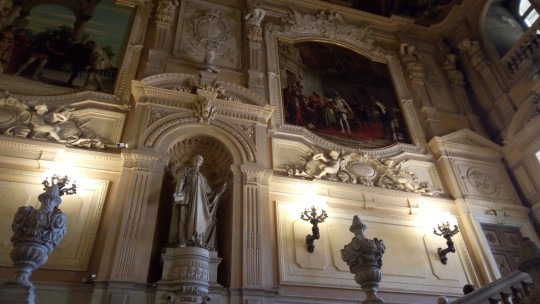
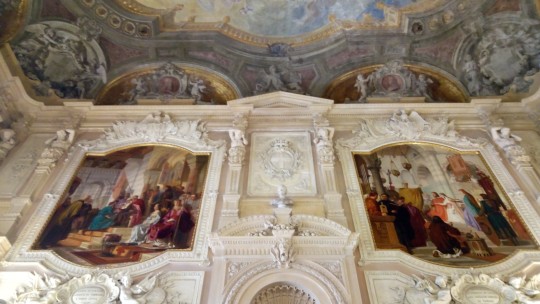
And the ceiling!
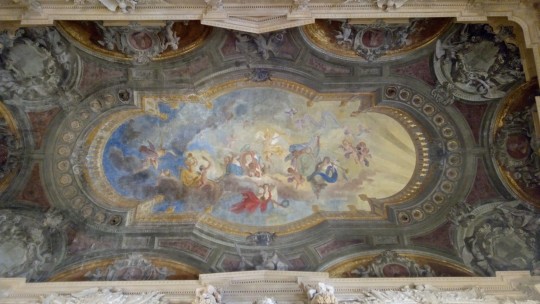
Bonus: badass statue of Emanuele Filiberto looking on the horizon.

63 notes
·
View notes
Text

Portrait of Marie Thérèse Louise of Savoy, Princesse de Lamballe (1749-1792), seated full-length, in a lilac dress, Jean-Baptiste Charpentier the Elder, c. 1769-70.
#art history#art#painting#aesthetic#rococò#rococco#princesses#savoia#savoy#classic art#classical art#art detail#charpentier#charpentier the elder#monarchy#portrait#royalty#royal aesthetic#royal family#queens#royal court#french painter#french painting#french art
79 notes
·
View notes
Photo

Elena on Montenegro, Queen of Italy with her two eldest daughters Yolanda and Mafalda.
#elena of montenegro#Mafalda of Savoy#yolanda of savoy#italian monarchy#house of savoy#italy#long live the queue
25 notes
·
View notes
Text
FYI the last heir to the former Italian throne*, Vittorio Emanuele di Savoia, died on February 3rd 2024!! The planet's getting rid of the royals one by one LMAO.
* Italy became a republic in 1946, and the royal family was exhiled after they collaborated with fascist dictator Mussolini, among other things
1 note
·
View note
Text

The Princess Royal interview: ‘I’m not sure that rewilding at scale is necessarily a good idea’
With conservation close to her heart, HRH explains what’s needed to save animals under threat and how the monarchy plays its part
By Jessamy Calkin for The Telegraph
Inside St James’s Palace there is a bit of a flutter about the weather. Her Royal Highness the Princess Royal has several engagements today, and things are not looking good; due to wind, the helicopter might not be able to land at the designated sites, which will make travelling times to and from events longer.
The staff are waiting to be informed by the police, who are in touch with the helicopter pilot. HRH, as everyone seems to call her, has not yet been told.
She has a lot to fit in: directly after our interview, she is off to a meeting about Gordonstoun school, in London, by car, then by helicopter to give a speech at an English Rural Housing Association conference in Bedfordshire, followed by a visit to the Aircraft Research Association, where she will unveil a plaque, then back to St James’s Palace to change for evensong at The King’s Chapel of the Savoy, where she will be reading the lesson for the Royal Victorian Order.
Her day will finish at about nine, when she will be able to eat. Quite often she has a dinner engagement as well. Next week she is going to Mumbai for four days.
Not for nothing is she known as the hardest-working royal. She is involved with more than 300 charities, organisations and military regiments, and last year carried out 200-plus engagements – more than any other member of the Royal family.

Her first official engagement was at the age of 18; shortly afterwards, in 1970, she became president of Save the Children – a position that led to her being nominated for a Nobel Peace Prize – and her work with that charity continues to this day.
Early on, her father, the Duke of Edinburgh, advised her to pick the charities she was interested in – and her interests have multiplied.
But one charity that is particularly close to her heart is the Whitley Fund for Nature, which is why I’m here. Started by Edward Whitley OBE as the Whitley Awards, WFN is now celebrating its 30th anniversary, and the Princess has been a patron for 24 years.
The annual ceremony takes place at the Royal Geographical Society in London and is colloquially known as the Green Oscars; WFN distributes grants totalling around £500,000 to worthy international winners.
So far, £20 million has been awarded to 200 conservationists across 80 countries. And the Princess has never missed a single ceremony, presenting the awards and delivering heartfelt speeches.

HRH is quite probably the most respected member of the Royal family. Her lack of pomp and ceremony and the low-key dedication with which she carries out her duties is much admired. There is no whingeing. She refused titles for her children, Peter and Zara.
She is well known for her dry sense of humour. She is an exceptionally accomplished horsewoman and in 1976 became the first member of the Royal family to compete in the Olympics; she had won Sports Personality of the Year five years earlier. She famously resisted an attempted kidnap in 1974.
She has also become an inadvertent style icon, often rewearing outfits she first wore decades ago, which is both charmingly thrifty and impressive in that she can still fit into them, and she seldom buys anything that is not made in the UK.
She recently made a good-natured appearance on her son-in-law Mike Tindall’s podcast The Good, the Bad & the Rugby and she seems like an all-round good egg.
She has both gravitas and spirit – there was some very moving footage of her accompanying her mother’s coffin on the long journey from Balmoral to Westminster Abbey.
Back in St James’s Palace, Charles, her private secretary, is arranging the chairs, anticipating where she might like to sit. HRH arrives in a striking bright-green suit over a striped silky shirt and heads smartly for a different chair than the one offered.
How did she first get involved with Whitley? ‘That’s entirely Edward’s fault,’ she says in her crisp voice. ‘But the common denominator is Gerald Durrell.’
The Princess grew up reading Durrell’s books and became patron of his zoo in Jersey, part of what is now the Durrell Wildlife Conservation Trust, in 1972. ‘He very kindly asked me to become involved in the zoo – as it was then – in Jersey, and Edward [later became] one of Durrell’s trustees.
‘He and I had similar beliefs in what Gerald was doing. Apart from the fact that Gerald wrote very good books, during his travels he seemed to understand better than most the impact on the populations in which animals lived and the relationship between them and their animals.
‘Being told you have to save this, that and the other is all very well but have you been there? Have you ever tried living in that environment to find out what that means to them? Because the fundamental point is that unless the conservation comes from the local area, it won’t be sustained.’
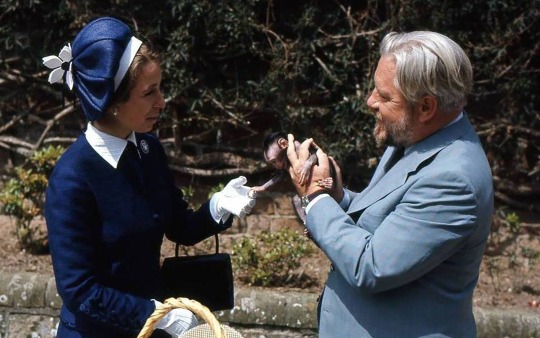
No one is going to save an animal just because they’re told to. ‘You’ve got to work out how the animals are going to survive with the people who live there, who will be the ones who make sure that it works.’
What was Durrell like? ‘Every bit as entertaining as you would think. His humour but also his understanding of the relative importance of things in other people’s lives was absolutely fascinating – and he was spot on.’
Durrell said he felt ‘sympathy for the small and ugly; since I’m big and ugly I try to preserve the little ones’. He was an expert on captive breeding, with a view to releasing into the wild, and he tended to select animals that were close to extinction, or those that could best be helped, or just ones that were not very charismatic.
‘Yes, not the sexy ones,’ says the Princess. ‘Or the obvious ones. His approach was very holistic. He understood the impact of habitat – not just on one species but how all of the things that lived in that habitat related to each other and that you couldn’t replicate that instantly somewhere else – it was very specific to an area.’
Gerald Durrell died in January 1995, of septicaemia. He was an alcoholic and had successfully received a liver transplant but died of complications it gave rise to. ‘He told me that there was no point doing a transplant because his old liver had got used to being fed all the things he’d been given to eat and drink in order to make deals as he went round the world,’ the Princess says, smiling.
Durrell’s legacy is long. One of his innovations was to establish training for conservationists from around the world. The first trainee went on to become the first director of the National Parks and Conservation Service in Mauritius, and thousands of students from 151 countries have since attended the centre, whose graduates became known as Gerald Durrell’s Army.
This became the title of a book by Edward Whitley, who travelled round the world to assess the progress of some of the trainees and the animals they were conserving – such as the largest eagle in the world in the Philippines and Alaotran gentle lemurs in Madagascar.
To launch the book in 1992, Whitley was invited to give a talk at the Royal Geographical Society, and he asked the Princess to come along. It was at the book launch that he decided to set up the charity.
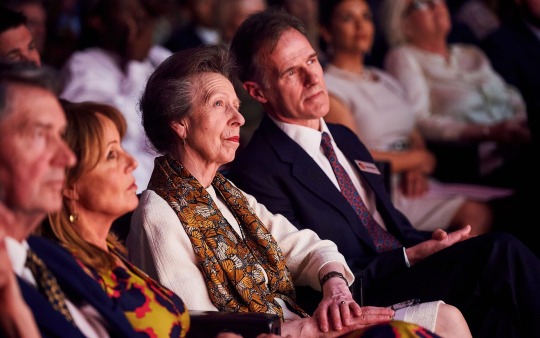
‘I sat down with Nigel Winser, who was the deputy director of the RGS and a long-time friend, and we designed what became the Whitley Awards on the back of a napkin,’ he tells me. In 1999, Whitley asked the Princess to become a patron. By then, ‘Attenborough was already on board, which encouraged her to think it wasn’t a fly-by-night organisation which would crash and burn’.
The awards focus on community-based conservation projects around the world. In order to qualify, each project has to be up and running – it cannot be a pipe dream. Initially there was only one award; this year there were six – of £40,000 each in project funding – plus a Gold Award of £100,000, given each year to a past winner in recognition of their outstanding contribution to conservation.
‘The reason WFN is so effective,’ says Alastair Fothergill, whose company Silverback made the acclaimed TV nature series Wild Isles, and who like Attenborough is a WFN ambassador, ‘is because its grants are awarded at the very cutting edge of conservation, where relatively modest funds can go a long way. Over the years, the fund has kickstarted the careers of many pioneers who have become leading lights in conservation.’

This year’s projects included safeguarding seabird nesting sites in Mexico; establishing ‘lion guards’ promoting coexistence in Cameroon; and protecting pangolins in Nepal, lemurs in Madagascar, freshwater fish in Lake Victoria and saiga antelope in west Kazakhstan. Each one heavily involves local communities.
In addition, WFN provides continuation funding for award-winners. To mark the 25th anniversary of Whitley, Kate Humble, also an ambassador, and Attenborough hosted an event at the Natural History Museum to help raise £1 million for continuation funding.
‘It was the first really big fundraiser we had,’ says Humble. ‘And one of the donors underwrote the entire cost of the event – so everything raised went into the continuation fund.’
The RGS ceremonies are joyous events. In addition to being presented with their award by the Princess Royal, each winner has a short film made of their work, narrated by Attenborough, screened at the event. ‘I’ve been going for 20 years,’ says Humble, ‘and every year I’m blown away by the winners – what they’ve overcome, what they’ve achieved.
‘You hear so much bad news, and you think, you know what? The world can be OK because people out there are doing this stuff – it’s demonstrable, it’s scientifically rigorous and it’s working. [It’s] an incredibly uplifting and inspiring evening.
‘And every year I watch Princess Anne speak and she never sounds like she’s reading someone else’s words. She cares deeply about what this charity does and what these people who win the awards have achieved – she is not a figurehead just trotting out nice words and providing a photo op. She could run the charity, she knows it so well and cares about it so deeply.
‘I’m not anti-royal,’ says Humble, ‘but neither am I someone who would go and wave a Union Jack. But when I see her I think, frankly you’re worth whatever it is we pay.’
HRH talks with fluency and knowledge on every subject. ‘She’s like a sponge – it’s unbelievable the information that’s stored in her brain,’ said her daughter Zara in an interview for ITV’s Anne: The Princess Royal at 70. ‘It’s quite annoying as well.’
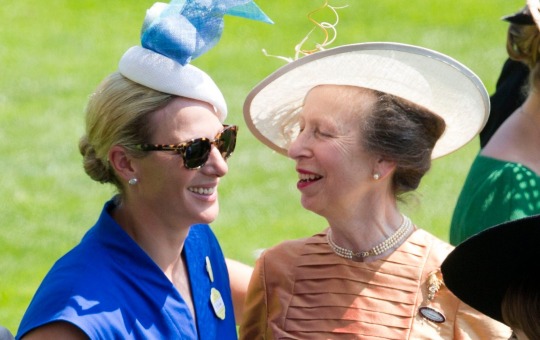
She needs to know a lot because she works with a diverse range of charities, taking in early years, healthcare, microfinance and animal welfare. Promoting collaboration between charities is key. ‘I do a lot of that,’ she says now. ‘I have meetings bringing them together which they all seem to enjoy, though sometimes it’s a bit illogical.
‘Knitting together all the international NGOs is important, but we need to look slightly outside the box – can we do this better, are there ways of helping people to be more sustainable?’
The Princess does occasionally discuss conservation with the King, she says, but she won’t say if they always agree. And her grandchildren? How does she teach them about conservation? (She has five, four girls and a boy.)
‘I don’t see so much of them but making the point that they live in an area which they shouldn’t take for granted is important I think; both my children are aware of that.’
Gatcombe Park in Gloucestershire, where the Princess and her husband, Vice Admiral Sir Timothy Laurence, live in an 18th-century manor with 730 acres of parkland, has some beautiful trees – ‘the ones that survive – quite a lot don’t, we live on Cotswold brash which is not popular with plants; but having said that we have beeches.
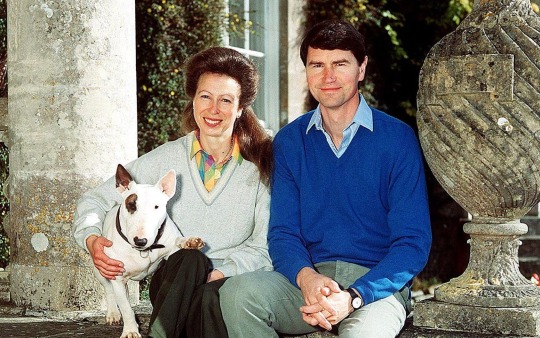
‘You’ve just got to live with what’s there and make sure it doesn’t get overwhelmed. I’m not sure that rewilding at scale is necessarily a good idea – it probably is in corners, but if you’re not careful you rewild all the wrong things because they are just the things that are more successful at growing.
‘My biggest row at home is ragwort. Lots of people think that ragwort is absolutely brilliant because butterflies love it, but it’s not good for the horses [it is toxic]. I would say don’t take all the ragwort out, just where the horses are – but it’s quite a delicate balance.’
There are, she says, ‘quite a lot of horses at home, but they’re other people’s as well’. She rides whenever she can. ‘It’s a very good place to observe nature from.’
The Princess supports several horse-related charities, and became patron of Riding for the Disabled in 1971, and president in 1985. ‘It was just becoming a national body when I was invited to become a patron – at that stage I knew nothing about disability but the concept that ponies or horses could make a difference was obviously interesting and I knew about them. No matter what the disability was, the answer was, if they’d like to ride, we’ll give it a go. The commonality of the experience was important.’
Essential things for running a charity, she says, are evaluation and thinking of the long term. She cites the influence of Eglantyne Jebb, founder of Save the Children, ‘who constantly evaluated programmes to see if they were making a difference, whether they were doing the right things and whether people were invested’.
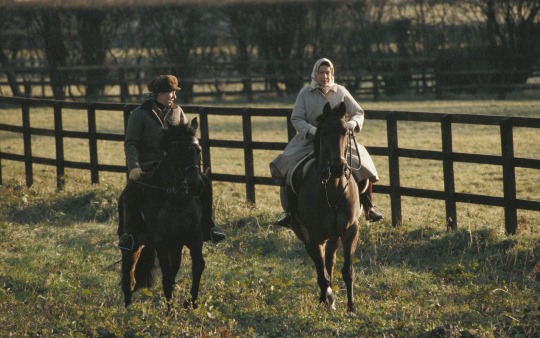
And it’s important to keep projects focused and manageable. ‘I’ve come to the conclusion that scale is the thing that defeats any good idea, because it can get to a size where people can’t cope.’
She has spoken in the past about the huge value of long-term commitment, in terms of the constitutional monarchy as well as in charity work. ‘Seeing things in the long term is a challenge,’ she says now, ‘but maybe part of our [value] – as a family – is long-term continuity, because the long-term view is quite hard to come by. And I think we can do that.’
May I ask what she might have done as a profession in another life? HRH laughs and looks vaguely impatient. ‘You can ask but I’ve no idea.’ Does she ever think about that?
‘Not really, and it’s way too late to have those concerns – in a way the fortunate part of my life has been the broad spectrum, to see so much. Not having a very specific interest has been a bonus, I suppose. We all have ways of doing things and with Whitley it is the practical aspects of what they do, and how to support them [that has been my focus].’
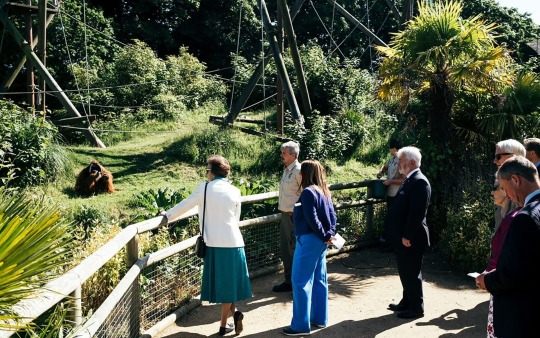
Edward Whitley, a member of the wealthy Greenall Whitley brewing family, set up Whitley Asset Management in 2002, alongside its finance director Louise Rettie, to serve a small number of clients. But there had always been animals in his life – his great-grandfather founded a small charity called the Whitley Animal Protection Trust; his great-great-uncle Herbert was an eccentric animal breeder who started Paignton Zoo.
In Edward’s office is a stuffed cockatoo that belonged to Herbert and a photograph of Mary, his favourite chimpanzee. Mary was famous for riding around on her tricycle and walking the dogs, or taking visitors by the hand and leading them round the zoo.
Edward studied English at Oxford then went into banking, joining NM Rothschild & Sons in 1983. He left in 1990 to write: Gerald Durrell’s Army came out in 1992 and he also co-wrote Rogue Trader, the autobiography of disgraced banker Nick Leeson, and worked with Richard Branson on his memoir.
Whitley is a tall, gentle man who doesn’t like talking about himself but is full of unbridled enthusiasm for WFN, and in particular its royal patron. ‘She transformed the charity – we never would have had the success we’ve had without her involvement. She saw what was possible and really helped us to achieve it, and she inspires the winners to do more. The winners are always pretty amazed at how she cross-examines them and cuts to the chase so quickly when she meets them.
‘She has an encyclopaedic knowledge of the world, and a phenomenal memory, and she is also very funny… And think of her father and the Duke of Edinburgh’s Award – she’s seen what a lifetime of work can achieve.’
In her speech at the Whitley Awards earlier this year, the Princess Royal cited her father, Gerald Durrell and Edward Whitley as the inspirations for her work with WFN. Among winners and their communities, she said, ‘it’s the global ambition to truly make a difference that has been astonishing’.
The awards, she continued, are for ‘the people on the ground, they’re the sharp end… It’s all very well to be here and understand what we think are the challenges, and want to make a difference, but when you meet the people who are actually out front and can turn that into a reality, it’s a real inspiration.’
Over the years, she has visited some of the winners’ projects, when her charity work takes her to those countries, ‘but not as many as I would like’, she says. In Uganda, for example, she met Dr Gladys Kalema-Zikusoka, who was working on improving hygiene in local communities after viruses had spread to gorillas she was managing in Bwindi national park. And in 1997, before she became a WFN patron, she travelled in a boat up the Amazon to see pink dolphins.
‘She was in Colombia for Save the Children and she asked the British embassy to include a visit to the Amazon in her trip – she was very interested in the dolphins,’ says Dr Fernando Trujillo, who went on to win an award in 2007.
‘The British embassy contacted me as an expert on rivers and dolphins. I was a little bit intimidated, and it was raining and I was worried we wouldn’t see any dolphins, but in the end we counted 32 – and she was so excited, every time she saw one she would jump up and down with excitement, and then rein herself in as if she suddenly remembered she was a princess. I could see her love for the environment was very genuine. From that day she was my favourite royal person.’
Another winner, Pablo Bordino, whose picture with HRH had been in the paper in Buenos Aires was flying back to Argentina. One of the flight attendants recognised him and when he arrived at the airport there was a television crew waiting to meet him. It raised the profile of his NGO - which protected marine life and habitats in Argentina - enormously and enabled him to generate further funding. ‘That’s the effect HRH has,’ says Whitley. ‘You can’t quantify it.’
Several award-winners went to the Princess’s 60th-birthday celebrations, including Claudio Padua, a successful businessman from Rio who gave it all up to pursue conservation, training at Durrell in Jersey and moving to a forest in Brazil with his wife, Suzana, and three children.
HRH had been to see them at their headquarters outside São Paulo and had taken an interest in their efforts to conserve the black lion tamarin, a monkey. They had no idea her visit would be such an ordeal, with all the security arrangements. ‘We had a call to ask what kind of security we had,’ says Claudio. ‘I said, “I have an old dog, that’s all.”’
‘She turned up with a security detail and entourage,’ Suzana adds. ‘They wanted to go into the forest to see the monkeys in our Land Rover and her security team asked, “Has this car been checked?” I said it hadn’t and they became very nervous but she ignored them and just got in anyway.’
Years later, the Paduas were invited to Buckingham Palace for her 60th. ‘It was a beautiful opportunity for us,’ says Suzana, ‘and as she came down the stairs she spotted us and said, “Oh how nice to see you. How are the monkeys?”’
The Whitley Fund for Nature is hosting a #PeopleforPlanet biodiversity summit on 6 and 7 November at London’s Royal Institution, where members of the public can hear live from Whitley Gold Award-winning conservationists from Africa, Central and South America, and Asia
#a new anneterview!#I love that she seems to remember everything and everyone#the part about her jumping up and down when she saw the dolphins#what a mood#princess anne#princess royal#british royal family#brf#newspapers#anned i quote
93 notes
·
View notes
Note
May, could you translate those headlines? Google translate is not helping much
Of course! Although you're probably getting a lesson in linguistics that you didn't ask for 😂 (post for reference)
La Gazzetta Dello Sport "Colpo rosso" = "Red hit / Hit in red" pretty self explanatory
Il Corriere Dello Sport "Lewis in rosso" = "Lewis in red" also pretty self explanatory
Tuttosport "Il Baronetto Rosso" = "the red baronet" absolute genius headline from them. It's a word play on Lewis being knighted and being addressed as Sir (in Italy knighthood is associated with the Republic "Cavaliere della Repubblica", whereas a baronet is also a peerage assigned by the Crown - I believe the Savoy royal family would assign that title instead of a knighthood when Italy was a monarchy, but I could be wrong! My Italian history needs some... Brushing up lmao), the infamous Red Baron, the German Ace of WW1 (a reference on Lewis also being a legendary "ace" who drives German machinery), and "red" being the color associated with Ferrari.
My favorite is the headline from La Stampa "Il Baronetto Rampante" = "The prancing baronet" (For the Lewis/Baronet association see above ⬆️). There is a pretty famous novel from Italian author Italo Calvino "Il Barone Rampante" (literal translation "The Rampant Baron") - in English the novel was published under the title "The Baron in the Trees" 💀 The newspaper headline is a play on Calvino's novel title, especially the prancing part. Everyone knows about "il Cavallino Rampante" ➡️ "the Prancing Horse" being Ferrari's symbol, so now we have our little prancing horse with the prancing baronet to go with it 🥺
Hope that makes sense!
43 notes
·
View notes
Photo
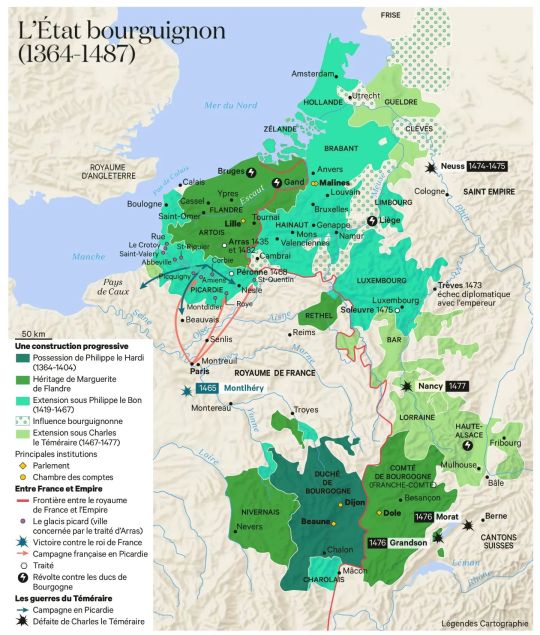
The Burgundian state, 1364-1487.
« Atlas historique mondial », Christian Grataloup, Les Arènes/L'Histoire, 2e éd., 2023
by cartesdhistoire
In 1363, the king of France, John the Good, gave Burgundy as an appanage to his son Philippe the Bold. Duke until 1404, he became master of a vast area, including Charolais, Artois, Franche-Comté, Rethel, Nevers and Brabant. His power made Flanders independent and it was a solid base for expansion in the Empire, continued by Duke Philip the Good (1419-1467): Namur, Hainaut, Holland, Zeeland and Luxembourg ( in addition to a nebula of satellites like the ecclesiastical principalities of Liège, Utrecht and even Cologne).
The Burgundian “State” is therefore made up of two blocks of territories, both shared between France and the Empire: Burgundy (France) and Franche-Comté (Empire) are governed from Dijon; from Lille then from Brussels from 1430, Flanders, Artois (France) and the Netherlands (Empire). The frequent meeting of States within the framework of each province allows regular taxation, which makes the Duke one of the richest sovereigns in the West, the bulk of his income coming from Flanders and the Netherlands. The administrative structure is close to that of the French monarchy (aids, Chambers of Accounts, states, Parliament).
Duke Charles the Bold (1467-1477) tried to reunite the two blocks, barely 60 km apart after 1441. He centralized, increased taxes and borrowed enormous sums from banks to obtain an imposing army and artillery. He then aimed for Lorraine and the archbishopric of Cologne but his ambitions united his enemies against him: Louis XI, the emperor, Lorraine, Savoy and the Swiss. In 1475, the Swiss crushed Charles's army at Grandson and Morat then the duke died in 1477, trying to retake Nancy. He is succeeded by his daughter Marie who married Maximilien, son of the emperor. She died on March 27, 1482 and on December 23, the Treaty of Arras divided her inheritance between Valois and Habsburg.
44 notes
·
View notes
Text

“The "Savoy Knot" tiara was one of the most beautiful jewels of the Italian monarchy, the combination of pearls and diamonds is always perfect. It's sadness that this tiara is hidden away in an Italian vault and not on display in a museum.” - Text & Image Submitted by cenacevedo15
28 notes
·
View notes
Text
Headcanons - Dino's family
Because Amano did not give us anything at all, please see below my headcanons for Dino's family and guardians.
Big Disclaimer: these all all OCs except obviously for Dino and his dad, who canonly appear in both manga and anime.
I am also very conscious that I have used actual Italian names and surnames for my OCs, so yeah. Perks of actually being Italian I guess. Anyway. Here you go:

And here you have all general explanations.
So, Dino's family is mainly normal people - as normal as they can be in the KHR universe, let's say they are mostly Nana Sawada's kind of normal.
I still have to establish how the Cavallone family came into existence, but I figure they were once nobles and once Italy got rid of the Savoy family and voted to establish a republic rather than a monarchy (2 June 1946) they kind of went through the change to kind of save themselves.
So, the thing in Italy is that we don't really have horse races, unless you count the Palio di Siena and the Palio di Asti, BUT we have EVERYTHING about cars.
Car races are A LOT, there is Formula 1, Formula 3, Moto GP, rally, whatever involves car races under the sun. It's kind of our specialty lol, Alfa, Ferrari, Lancia and Lamborghini are VERY famous brands.
And car races means a lot of betting, which is something a mafia boss would want to have part in it money-wise and power-wise.
Which went quite well as an alternative income after losing nobility status until Cosimo Cavallone (the Ninth) inherited the thing from his father Giorgio (the Eighth) and kind of leaned too much into betting and went into huge and heavy debts. Reasons why Dino had to pay off his dad's debts whilst becoming the Tenth boss. :)
Surely this must have given Dino a deep hatred of betting, but I feel this is a headcanon for a different post.
Anyway.
Onto his family.
We of course know Romario and Ivan and all of his subordinates, but SURELY Dino has a big family.
Dino is an only child with an ungodly amount of cousins. He is also one of the oldest among the cousins, which means he has had to babysit A LOT during family gatherings. Here I am including the closest ones, but trust me, there is an entire army of cousins.
And he has to know them all.
Speaking about cousins, the most notable are:
Marco Gallo: son of his aunt Marta and his uncle Donato, Marco has never had a single serious thought in his head in his whole life. He loves playing pranks and whilst the 99% of the times they are harmless, he is also a very easy target if anyone takes his pranks the wrong way. Among his pranks, mainly at Dino's expenses, he snapped a "Christmassy" photo of teen!Dino and teen!Squalo crouched over one of the newborn cousins at a family event and dubbing it as "the Nativity". Oh, sometimes he shows up way too drunk at family events and shenanigans ensue.
Margherita and Irene Testa: they are twins. Those twins who look the same and you cannot distinguish them unless they wear different clothes/different hairstyles. Which was an issue until they hit their teenage years and they developed opposite tastes, as in Margherita is the one who will have everything made of natural fibers, is into the new age kind of thing and Irene is the exact opposite of it. In spite of everything they really get along well. when they were children their favourite sport was to corner Dino and make him play dolls with them, which Dino hated. Once Squalo was in the picture they made him play dolls too.
But Dino not only has cousins and a father, he also has a mother. Veronica Greco, aka the Most Beautiful Woman no one has yet understood how she could marry Cosimo Cavallone, a very average-looking man. Dino took after her in looks.
By the way, in Italy we DO NOT take the husband's name, unless the person specifically wants to, it's the very first "fuck you" to patriarchy that women could have, because up until the mid-seventies women were pretty much treated like property/objects.
Anyway.
Veronica is one of those people who are naturally good at everything. She also has the ability to step into a room and make everyone go quiet, which is very useful when family events go downhill. She just says "Stop" and everyone goes quiet, then she smiles and solves the issues at hand.
Dino can do that for about 1 minute, then he trips or falls down or something and the magic is gone.
Veronica also deals with a lot of the family drama and the gossips and has also gone very near a divorce because of Cosimo's gambling habits.
And speaking of Dino's dad, he is not actually dead, he decided to retire once Dino became boss and he is now enjoying the countryside with his wife Veronica. His hobbies consist in collecting scale models of cars and tending at the garden.
Of course Dino has his own Guardians. We do not usually see them because Dino can deal with most of the things himself, but - figure something like Byakuran happens - they will gladly join the fight. They all were people either saved or friended by Dino whilst Reborn was his tutor and was in the process of becoming the Bucking Bronco.
They are:
Alessandro Ferro: Storm Guardian. Very reliable in a fight, he uses a crossbow and he is a master sniper. Somehow he once got arrested for stealing manholes, but never served as his alibi was proved.
Diego Guerra: Rain guardian, he originally was supposed to join the Varia, but they had enough swordsmen and he needed a job, as he was deep into debt. Dino listened to him and helped him get back on his feet. since then Diego's loyalty has been with Dino. He uses a rapier as weapon.
Lucrezia Battaglia: Sun guardian, Judo black belt 8th dan, undefeated so far. She is short and way too much into cutesy stuff, but she will beat you to a pulp if she feels a hint of threat. She absolutely loves shoujo anime.
Cristian D'amico: Thunder guardian - and no, I have not messed the spelling, in Italy we tend to omit the H bc it is a mute consonant. The chillest guy on earth. Takes things with such a phlegm. It's obviously the calm before the storm when he fights. Would rather nap than fight tho.
Danilo de Angelis: he is the aloof one. He likes wandering about and looks a little bit lost, but don't be fooled. He is very perceptive and will notice when things are not going well.
Iacopo La Morte: everyone is scared of him because they hear his surname (aka The Death) andeveryone is like "OMG this guy is going to kill us all", and they kind of get disappointed when they see he is actually a really nice person. Unless you wronged the family, in which case he is going to make sure you regret it with all your being.
And I admit I have only developed everyone this much just because I was like "oh, it's only for the Big Damn Table, they are going to have sporadic apparitions whilst I fill the 100 prompts", but now that I actually see this written down I kind of want to expand. What do you all think about this?
#khr#katekyo hitman reborn#kateikyoushi hitman reborn#dino cavallone#family cavallone#khr headcanons#cavallone family tree
17 notes
·
View notes
Text
THIS DAY IN GAY HISTORY
based on: The White Crane Institute's 'Gay Wisdom', Gay Birthdays, Gay For Today, Famous GLBT, glbt-Gay Encylopedia, Today in Gay History, Wikipedia, and more …


1663 – The French/Italian prince Prince Eugene of Savoy was born on this date (d.1736). Prince Eugene was one of the most successful military commanders in modern European history, rising to the highest offices of state at the Imperial court in Vienna.
Born in Paris to aristocratic Savoyard parents, Eugene grew up around the French court of King Louis XIV. Based on his poor physique and bearing, the Prince was initially prepared for a career in the church, but by the age of 19 he had determined on a military career. Rejected by Louis XIV for service in the French army, Eugene moved to Austria and transferred his loyalty to the Hapsburg Monarchy.
Little is known about Eugene's life before 1683. In his early boyhood Eugene belonged to what historians call a "small, effeminate set." Hostile anecdotal evidence of this period is supplied by the Duchess of Orléans who accused him of "homosexual antics" with lackeys and pages, calling him 'a slut' and declaring that 'he often played the woman with young people'. But her remarks about Eugene were made years later, and only then after he had severely mauled the armies of her brother-in-law, Louis XIV.
Eugene's childhood behaviour may have been a result his mother's lax household and her own failure to show any affection towards him.
Of related interest are a popular soldier's song of the period which that alluded to Eugene's voyage on the Rhine River with his friend, the Marquis de la Moussaye. When a storm broke out, the general dreaded the worst, but the Marquis consoled him with the words: "Our lives are safe/ For we are sodomites/ Destined to perish only by fire/ We shall land."
A comment made by Schulenberg in 1709 should probably read that the prince enjoyed "la petite debauche et des p[énis] au dela de tout," which means that he derived his sexual gratification from the virile members of others - that is, he was a botttom or a cocksucker. He was known as 'Madam l' Ancienne' (The Old Lady) to his contemporaries, and 'Mars without Venus' to his men.

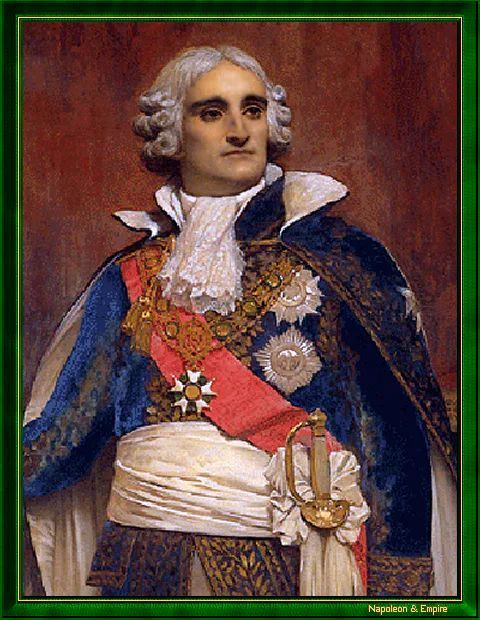
1753 – Jean-Jacques-Régis de Cambacérès, 1st Duke of Parma (d.1824) was a French lawyer and statesman during the French Revolution and the First Empire, best remembered as the author of the Napoleonic code, which still forms the basis of French civil law.
Throughout his career, his chief interest was in developing the principles of revolutionary jurisprudence. Although it is generally believed that he was solely responsible for legalizing in France same-sex relations between consenting adults in private, that is an oversimplification based on the irony that he himself was homosexual.
Before the French Revolution, sodomy had been a capital crime under royal legislation. The penalty was burning at the stake. Very few men, however, were ever actually prosecuted and executed for consensual sodomy (no more than five in the entire eighteenth century). Sodomites arrested by the police were more usually released with a warning or held in prison for (at most) a few weeks or months.
Cambacérès was one of the principal framers of the Napoléonic Code, which not only decriminalized sodomy in France but in every one of its colonies (and subsequently post-colonial freed countries).
Cambacérés sexuality was well known, and he was commonly called "Tante Urlurette," The triumverate of Napoleon, Cambacérés and Lebrun, in fact, was known as Hic, Haec and Hoc, Latin for "this one" in male, female and neuter genders, respectively.
Cambacérés, so it is told, was once late for an appointment with Napoleon and offered the excuse of having "been with a woman" to the annoyed emperor.
"Been with a woman?" Napoleon sniffed, "Next time tell her this: `Take your hat and cane and leave me.'"


1956 – Martina Navratilova, born in Prague, is a Czech American tennis player and a former World No. 1. Billie Jean King said about Navratilova in 2006, "She's the greatest singles, doubles and mixed doubles player who's ever lived."
Navratilova won 18 Grand Slam singles titles, 31 Grand Slam women's doubles titles (an all-time record), and 10 Grand Slam mixed doubles titles. She reached the Wimbledon singles final 12 times, including 9 consecutive years from 1982 through 1990, and won the women's singles title at Wimbledon a record 9 times. She and King each won 20 Wimbledon titles, an all-time record. Navratilova is one of just three women to have accomplished a career Grand Slam in singles, women's doubles, and mixed doubles (called the Grand Slam "boxed set") a record she shares with Margaret Court and Doris Hart. She holds the open era record for most singles titles (167) and doubles titles (177). She recorded the longest winning streak in the open era (74 consecutive matches) and three of the six longest winning streaks in the women's open era. Navratilova, Margaret Court, and Maureen Connolly share the record for the most consecutive Grand Slam singles titles (six). Navratilova reached 11 consecutive Grand Slam singles finals, second all-time to Steffi Graf's 13. In women's doubles, Navratilova and Pam Shriver won 109 consecutive matches and won all four Grand Slam titles in 1984. Also the pair set an all time record of 79 titles together and tied Louise Brough Clapp's and Margaret Osborne duPont's record of 20 Grand Slam women's doubles titles as a team. In addition she won the season ending WTA Tour Championships a record 8 times and made the finals a record 14 times and won the doubles title a record 11 times. Navratilova is the only man or woman to have won 8 different tournaments at least 7 times.
Originally from Czechoslovakia, she was stripped of her citizenship when, in 1975 at the age of 18, she asked the United States for political asylum and was granted temporary residency. At the time, Navratilova was told by the Czechoslovakian Sports Federation that she was becoming too Americanized and that she should go back to school and make tennis secondary. Navratilova became a US citizen in 1981, but on January 9, 2008, she had her Czech citizenship restored. She stated she has not renounced her American citizenship nor does she plan to do so and that the restoration of her Czech citizenship was not politically motivated.
In 1981, shortly after becoming a United States citizen, Navratilova came out publicly about her sexual orientation. During the early 1980s, she was involved with author Rita Mae Brown. From 1984 to 1991, Navratilova had a long-term relationship with partner Judy Nelson. Their split in 1991 included a much-publicized legal wrangle. Navratilova was featured in a WITA (Women's International Tennis Association) calendar, shot by Jean Renard with her Wimbledon trophies and Nelson's children in the background.
In 1985, Navratilova released an autobiography, co-written with New York Times sports columnist George Vecsey, entitled Martina in the U.S. and Being Myself in the rest of the world. She had earlier co-written a tennis instruction book with Mary Carillo in 1982 entitled Tennis My Way. She later wrote three mystery novels with Liz Nickles: The Total Zone (1994), Breaking Point (1996), and Killer Instinct (1997).
Navratilova also made a humorous guest appearance on the NBC sitcom Will & Grace in a 2000 episode in which a flashback revealed that she had been a heterosexual until a 1985 relationship with character Karen Walker "turned her Lesbian." Navratilova's most recent literary effort was a health and fitness book entitled Shape Your Self (2006).
On April 7, 2010, Navratilova announced that she was being treated for breast cancer. A routine mammography in January 2010 had revealed that she had a ductal carcinoma in situ in her left breast, which she was informed of in February, and in March she had the tumour surgically removed.

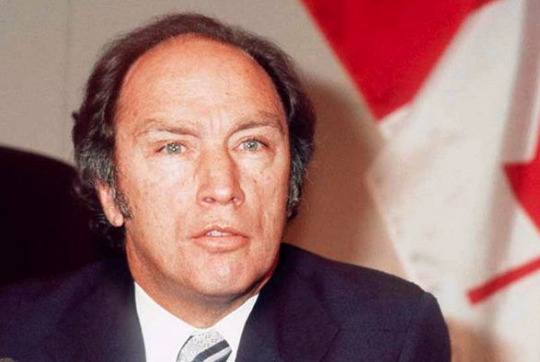
1919 – Pierre Elliott Trudeau, (d.2000) was the 15th Prime Minister of Canada from April 20, 1968 to June 4, 1979, and again from March 3, 1980 to June 30, 1984.
Trudeau began his political career as a lawyer, intellectual, and activist in Quebec politics. In the 1960s, he entered federal politics by joining the Liberal Party of Canada. He was appointed as Lester Pearson's Parliamentary Secretary, and later became his Minister of Justice. From his base in Montreal, Trudeau took control of the Liberal Party and became a charismatic leader, inspiring "Trudeaumania". From the late 1960s until the mid-1980s, he dominated the Canadian political scene and aroused passionate reactions. "Reason before passion" was his personal motto. He retired from politics in 1984.
Admirers praise the force of Trudeau's intellect and salute his political acumen in preserving national unity against the Quebec sovereignty movement, suppressing a violent revolt, and establishing the Charter of Rights and Freedoms within Canada's constitution. Critics accuse him of arrogance, economic mismanagement, and unduly favouring the federal government relative to the provinces.
As Minister of Justice, Pierre Trudeau was responsible for introducing the landmark Criminal Law Amendment Act, 1968-69, an omnibus bill whose provisions included, among other things, the decriminalization of homosexual acts between consenting adults, the legalization of contraception, abortion and lotteries, new gun ownership restrictions as well as the authorization of breathalyzer tests on suspected drunk drivers. Trudeau famously defended the decriminalization of homosexual acts segment of the bill by telling reporters that "there's no place for the state in the bedrooms of the nation", adding that "what's done in private between adults doesn't concern the Criminal Code".

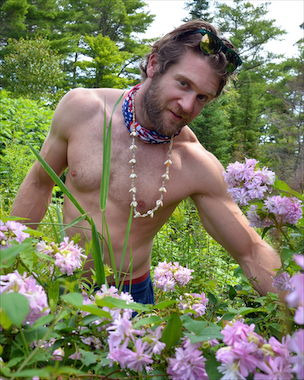
1980 – Richard John Sawka II, better known as Colby Keller, is an American visual artist and former pornographic film actor. His career in porn film started in 2004 at Sean Cody and subsequently expanded to include such studios as Cocksure Men, Randy Blue, Titan Men, Falcon, CockyBoys and Men.com. Keller has also appeared in the short, Zolushka, a queer retelling of Cinderella, and in the popular series Capitol Hill, both by the cult filmmaker Wes Hurley.

Born in Michigan, Colby Keller was raised in Texas where he graduated from the University of Houston with a bachelor's degree in anthropology. In addition, he is a graduate of The Maryland Institute College of Art, with a Master of Fine Arts (MFA) in visual and performing arts.
During his time performing in gay porn, Keller continued to work as an artist. His two most notable art projects are Pieces of Eight and Everything But Lenin, both collaborative performance pieces. Pieces of Eight involved multiple projects and multiple collaborations while Everything But Lenin involved giving away all of his earthly possessions with the exception a large metal plaque of Lenin and was precipitated by an eviction notice presented to residents of his Baltimore apartment complex in March 2014. Those who took part received a signed certificate as project participants.
In addition to his porn performances and art projects, Keller appeared in a series of sex advice videos (titled In Bed With Colby Keller) for Manhunt. The series ran from 2012 until 2014 and resulted in 62 videos.
In 2012, Keller appeared in a masquerade-themed music video for the song "After Dark", by dance artists Undercover. And, in his 2013 music video for "Cannibal", Natti Vogel enlisted Keller to play a hooded witch to his tempted Hansel in a recreation of Hansel and Gretel.
In 2013, Keller collaborated with artist Cameron Stalheim on a project called Myth as Object, which resulted in a 2014 exhibit as Stalheim's MFA graduating thesis at the Maryland Institute College of Art. Keller's body was cast in silicone to create a thirty-foot long merman sculpture in his likeness.
In 2014, Keller sold his belongings and began a project Colby Does America, composed of porn scenes filmed across every state in the United States.
In 2017, he appeared in two episodes of the third season of EastSiders.Keller is a communist who credits his communist beliefs to a strict Christian upbringing with the Assemblies of God. Keller voted for Donald Trump in the 2016 United States presidential election, stating, "I’m going to vote for Trump! I think he’s a destabilizing force…I don’t support or endorse any of Trump’s policies. I just think it’ll escalate the problem, which is the best we can hope for."

1981 – An Ohio appellate court sustains the libel verdict against Larry Flint's Hustler magazine for a satirical cartoon showing his rival, Penthouse publisher Robert Guccione, engaged in a "homosexual act."

1990 – Three white supremacists were convicted of conspiring to to bomb Neighbours Disco in Seattle, on Capitol Hill, a popular, gay-oriented restaurant and nightspot. A federal grand jury on Thursday indicted three Idaho men linked to a white supremacist group, alleging they conspired to blow up the gay nightclub. All were associated with the Church of Jesus Christ Christian, better known as the Aryan Nations. The church has preached a religion of white supremacy and vowed to establish a whites-only enclave in the Pacific Northwest. The men were held on two counts of conspiring to destroy Neighbours Disco, and one count of possessing a destructive device. A test bomb was detonated on April 14 in Idaho, with plans to blow up Neighbours and later other bars in Seattle.


11 notes
·
View notes
Text
There were a lot of people visiting the Turin Royal Museums today, so I couldn't stop to take many pictures, anyway below you will find some ^_^
This is the throne room:
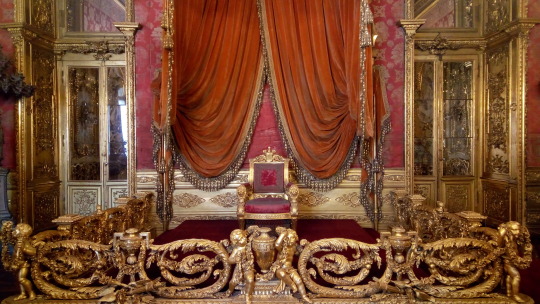
The Council room:

The dining room:
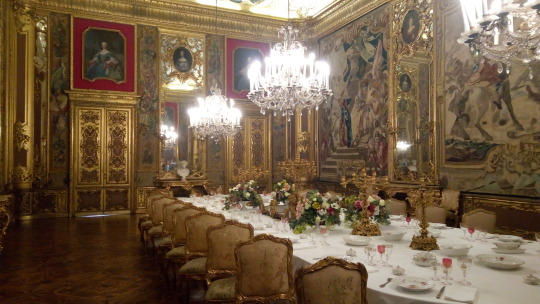
A corner of the Medallion room:

And last but not least the Daniel Gallery, its ceiling and a golden door at the end of it:
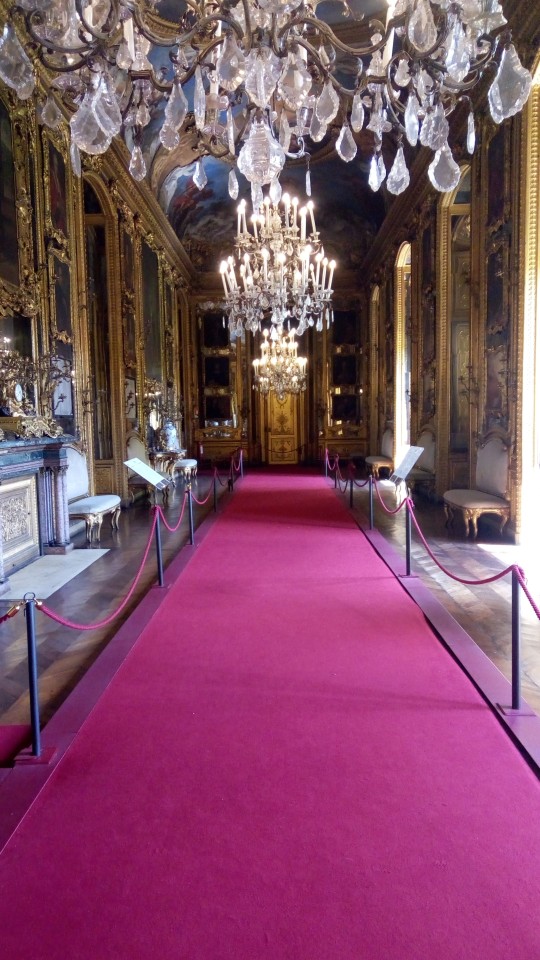

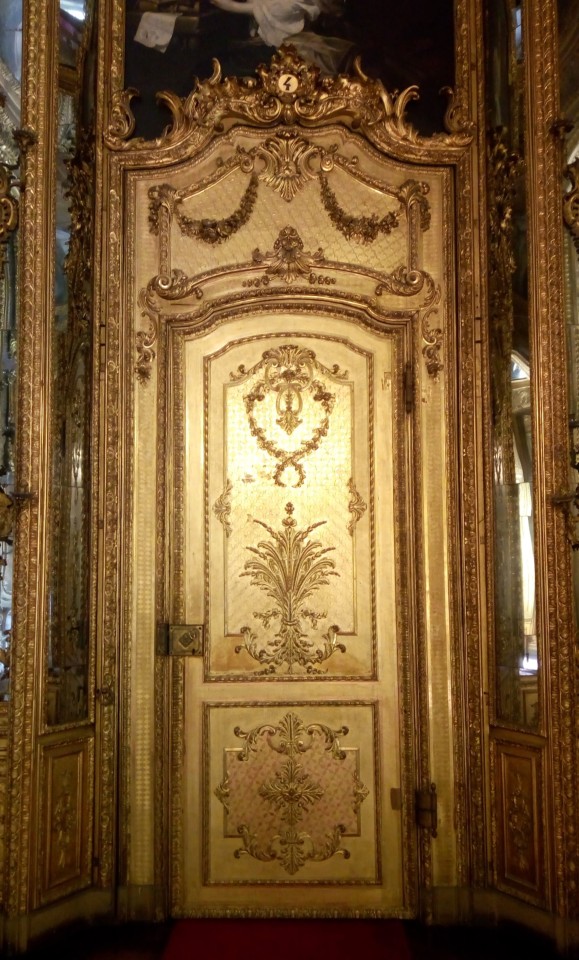
I wish I could have taken more and better quality pictures :< as I said, there were a lot of people and the rooms were rather small and dark.
7 notes
·
View notes
Text

Death of the Princess de Lamballe (1908) by Leon Maxime Faivre
After refusing to swear "hatred to the King and the Queen and the monarchy", Marie Thérèse Louise of Savoy, Princesse de Lamballe, was captured and killed by an angry mob in the September Massacres during the French Revolution in 1792.
(more info)
#Death of the Princess de Lamballe#1908#1900s#Leon Maxime Faivre#French Revolution#1792#art#painting#September Massacre#Miss Cromwell
5 notes
·
View notes
Photo
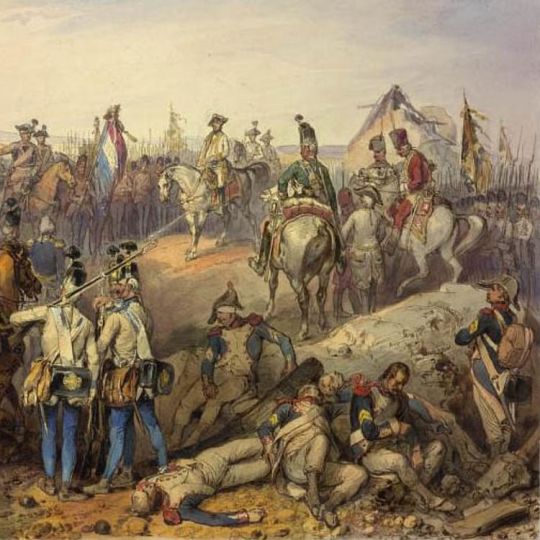
Battle of Neerwinden
The Battle of Neerwinden saw the major defeat of a French republican army by an allied force of Austrians and Dutch during the War of the First Coalition (1792-97), part of the broader French Revolutionary Wars (1792-1802). The battle drove the French from Belgium and led French General Charles-François Dumouriez (1739-1823) to defect to the Austrians.
The War Expands
By the end of 1792, the armies of the young French Republic seemed invincible. Revolutionary France's miraculous victory at the Battle of Valmy on 20 September had turned the tide of the war, halting a Prussian invasion in its tracks, saving the French Revolution (1789-99), and emboldening the revolutionaries to abolish their monarchy. In the following weeks, French armies took the offensive; while one army swept into the Rhineland and occupied the cities of Worms, Frankfurt, and Mainz, another pushed into Savoy and Nice, which were conquered without a single shot fired.
Continue reading...
25 notes
·
View notes
Note
The Italian monarchy thing is so wild because 1. Why renounce something you don’t have, and if it’s his eldest daughter he could say he wants her to have it one day. Apparently she has like 80k followers on Instagram so he thinks it will help her become queen 😭😂
and that is precisely why I find most deposed royals cringe af lol
first of all, from what I understand most italian monarchists support Prince Aimone, Duke of Aosta as the actual head of the House of Savoy (although Vittorio Emanuele has the stronger claim) so ya know maybe, chill?
Also announcing your decision to renounce your place in the line of ‘succession’ in favor of your 19 year old daughter when you’re not the heir and your father is very much still alive is very odd. But to be fair, Vittorio is 86…..which leads to my next point, isn’t Vittoria entirely too young to be the head of the family now? You can be progressive (and from what has been said about her, she’s classic gen-z, caring social issues and the environment) and have your head of the family be someone younger without having said person to be a teenager.
5 notes
·
View notes
Text
Anne de Beaujeu
Anne de Beaujeu (Anne de France, 1461-1522)
Unofficial regent of France and duchess of Bourbon

Anne de Beaujeu provides an example of female political authority in a country where the Salic Law prevented women from assuming the crown. She also illustrates the tension between an increasingly centralized monarchy on the one hand and feudal independence on the other, having supported both causes at different times in her life. Probably born in 1461, Anne de Beaujeu was the oldest of the surviving children of Louis XI, king of France, and the one said to resemble him most intellectually and temperamentally. When this king died in 1483 leaving a thirteen-year-old Charles VIII on the throne, Anne and her husband, Pierre de Beaujeu, as his guardians, assumed control. In so doing, they resisted Louis d'Orléans, the next in line to the throne, who wished to be named regent. Louis and his supporters sought help from the estates-general who met in 1484 but who ultimately supported Anne's cause. Referred to as Madame la Grande (Grand Madam), Anne was recognized by the court and by foreign emissaries as the person actually ruling France during the early years of Charles's reign.
In 1488 she and Charles VIII squelched a noble uprising, the Guerre Folle (the Foolish War) led by Louis d'Orléans and Francis II duke of Brittany. Charles then married the new duchess of Brittany, Anne, to ensure the duchy's loyalty to France. Meanwhile Pierre de Beaujeu's two older brothers had died, leaving Pierre with the Bourbon inheritance. Anne and her husband were now the richest and most powerful nobles in France. In 1491, after the loss of one infant and fifteen years of childlessness, Anne gave birth to a daughter, Suzanne. As Charles VIII grew increasingly independent of his older sister, Anne redirected her attention to her own lands and feudal duties, though she remained his advisor while retaining her ties to the court. When Charles died suddenly in 1498 leaving no heirs, Louis d'Orléans became king of France. Neither his previous attacks on the crown nor his well-known personal vices inspired confidence in his subjects, so the support of Anne de Beaujeu and her husband were instrumental in a smooth accession to the throne. Anne agreed to overlook their antagonistic past and did not hinder the annulment Louis immediately requested from her physically disabled sister, Jeanne. In exchange, Louis XII waived the royal rights to the Bourbon inheritance in the case that Anne and Pierre did not have a male heir. Once all this had been established, the Bourbon's relationship with Louis XII and his new queen, Charles's widow Anne de Bretagne, became quite cordial. Anne de Beaujeu no longer held any direct influence, however, over the governance of the French state.
In 1504 or 1505, after the death of her husband and before she arranged a marriage for her daughter, Anne wrote Suzanne a book of lessons, Les Enseignements d'Anne de France, duchesse de Bourbonnois et d'Auvergne, à sa fille Susanne de Bourbon, modeled on the book that Louis IX had written for his daughter, the one her own father had written for Charles, and the writings of Christine de Pizan. Anne's version contains conventional advice on the appropriate behavior for noblewomen. During her unofficial regency, Anne had overseen the education of many young noblewomen at court, including Louise de Savoie, Marguerite d'Autriche, and Diane de Poitiers. The humble feminine figure that emerges from the Enseignements, however, seems at odds with their independent author. More easily recognizable are the anxieties about life as an older widow distant from court. The Enseignements ends with a tale about a noblewoman who bravely sacrifices her only child for the honor of her family and the interests of the king. Suzanne was, in fact, married shortly thereafter to a cousin to protect the integrity of the Bourbon inheritance.
In contrast to the moral of her tale, however, the interests of a noble family and those of the crown did not always overlap. Before she died, Anne witnessed the opposition of two adults whom she had raised from childhood: her son-in-law, the connétable de Bourbon, and Louise de Savoie, mother of Francis I, successor to Louis XII. Louise and her son, suspicious of the wealth and power of the connétable, the Bourbon heir, challenged his inheritance. After losing the domain that Anne had so carefully built up and defended during her lifetime, the connétable, perhaps with Anne's bitter approval, responded by betraying the French king Francis I- the other cause that Anne had defended so staunchly during her brother's reign. Anne died in 1522, before this ultimate betrayal.
Emily Thompson in Encyclopedia of Women in the Renaissance.
#xv#xvi#anne de france#anne de beaujeu#regents#duchesse de bourbon#louis xi#charles viii#pierre de beaujeu#louis xii#françois ii de bretagne#anne de bretagne#la guerre folle#suzanne de bourbon#sainte jeanne de france#louise de savoie#marguerite d'autriche#diane de poitiers#charles iii de bourbon#le connétable de bourbon#françois i#proof that anne approved of this ? i didn't find anything#the connétable's betrayal is a complex story#one can point fingers at françois i and louise de savoie too#emily thompson#encyclopedia of women in the renaissance
17 notes
·
View notes
Note
Fun Fact - Liechtenstein is a Catholic monarchy too but for some reason they don't have the privilege. I don't know why that is tbh. If anyone does can they please explain. - the Pope hasn't granted Liechtenstein the privilege du blanc. All the other Catholic monarchies have gotten express permission from previous popes for the queens to wear white. Back when Italy was a monarchy, their queens also had the privilege du blanc, and I think the House of Savoy has the privilege too, even though they aren't ruling any more.
Oh no that I know like I explained previously, what I meant was why haven't they given it to liechtenstein too since they are catholics too, also considering the fact that they are the closest when it comes to completely following orthodox catholic beliefs. I feel like I should change the wording of that part of the ask 😭😄
4 notes
·
View notes